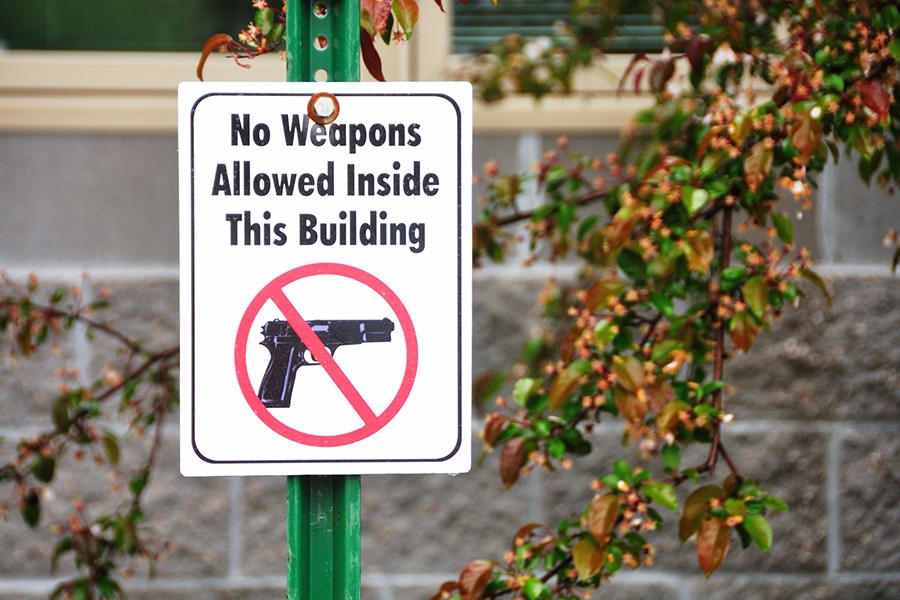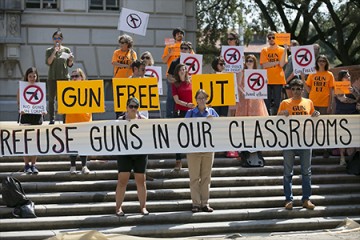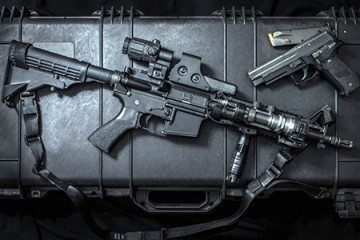Policies allowing civilians to bring guns on to college campuses are unlikely to reduce mass shootings on campus and are likely to lead to more shootings, homicides, and suicides on campus—especially among students—a new report concludes.
The report was published today by the Johns Hopkins Bloomberg School of Public Health with contributions from researchers at Stanford University and the University of Massachusetts, Boston.
At least eight states have laws that allow civilians who can legally carry guns in public to also bring firearms on campuses of public universities and colleges. A number of other states considered new laws to expand legal carrying of firearms on college campuses during their 2015-2016 legislative sessions.
Most laws allowing civilians to bring guns on college campuses are relatively new, and there have been no studies to assess their effects directly. The report examines available research on right-to-carry gun laws and data about mass public shootings in public spaces, concluding that neither "gun-free" zones nor right-to-carry gun laws appear to affect mass shootings in public spaces.
Although civilian gun carrying is increasing in many places and mass shootings are increasing, legally armed citizens very rarely are able to prevent or interrupt mass shootings. The researchers also conclude from available data that proposals to allow guns on college campuses would likely increase the lethality of assaults and suicide attempts on campuses, both of which are far more common than mass shootings on college campuses.
"Proponents of right-to-carry laws that make it legal for individuals to carry firearms, both on and off college campuses, often blame mass shootings on 'gun-free zones' and argue that arming more civilians can deter or stop mass shootings," says report author Daniel Webster, director of the Johns Hopkins Center for Gun Policy and Research. "The best available evidence, however, does not support these claims."
A review by Louis Klarevas, associate lecturer at the University of Massachusetts, Boston, and one of the report's co-authors, examined the 111 high-fatality mass shootings—defined as events in which six or more people are killed—that occurred in the U.S. since 1966 and found that only 13 had taken place in a truly gun-free zone.
Also see
"Interestingly, not only do the vast majority of high-fatality mass shootings not occur in 'gun free zones,'" says Klarevas, "there is also little evidence that mass shooting perpetrators seek out 'gun-free zones' for their attacks."
Klarevas's research, the report notes, indicates fatalities from mass shootings increased slightly on average after states adopted right-to-carry laws.
"Rather than deter gun violence, the most recent and most rigorous research on right-to-carry laws suggests that the laws are associated with increased violence with guns," says report co-author John Donohue, law professor at Stanford University.
The report authors summarize research on the civilian use of guns, the impact of right-to-carry laws on violent crime and mass shootings, patterns in public mass shootings, and relevant factors related to the college campus environment to determine the potential benefits and risks of allowing civilian gun carrying on college campuses.
The report also looked at the impact, if any, that legally armed citizens had on mass shootings. An FBI study that examined 160 active shootings in the U.S. found only one incident that involved an armed civilian intervening to end an attack in progress.
As for the college campus environments, the report notes that fights, suicide attempts, and reckless behavior—all of which are more lethal when a firearm is present—are far more common among college students in general than are opportunities for armed students to stop rampage shootings.
"Taken together, it's evident that many of the arguments used to support laws expanding civilian gun carrying are not backed by the solid research evidence," Webster says. "And when you next consider factors and challenges specific to the college environment, you see that the college campus environment is particularly ill-suited for civilian gun possession."
The authors identified several factors unique to the topics of public safety and gun carrying on college campuses, including: brain and cognitive development in adolescence and emerging adulthood, onset of mental illness and youth suicide in teens and young adults, and alcohol on college campuses. These factors help explain why college students are particularly prone to violence directed at others and oneself.
"Increasing gun availability in campus environments could make these common acts of aggression or self-harm more deadly," Webster says. "While the net effect of right-to-carry policies have negatively impacted public safety broadly, the effects are likely to be far more deleterious when extended to college campuses. Allowing students to carry firearms on college campuses would likely compromise the lives and safety of innocent students, faculty, and staff."
Posted in Politics+Society
Tagged center for gun violence solutions, gun control, daniel webster











